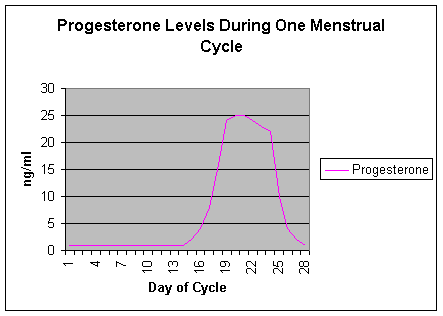Progesterone |
|
Progesterone is a female hormone, produced primarily in the ovary, primarily
during the second half ("luteal phase") of the menstrual cycle.
Men also produce progesterone, but only very small amounts.
Shortly after ovulation, progesterone levels rise quickly and remain elevated for about 10 days.
Progesterone levels are sometimes used to evaluate a possible ectopic pregnancy:
Elevations found in:
Decreases found in:
|
Normal Values*
*These are general values taken from a variety of sources. The actual normal values may vary from lab to lab and from one type of testing protocol to another.
|
